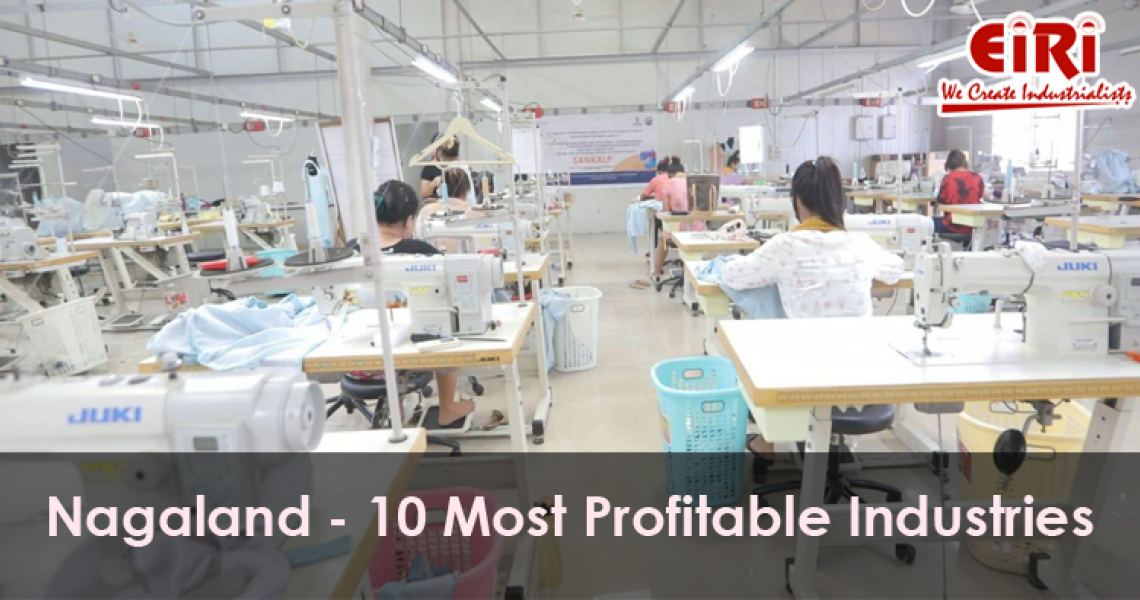10 Manufacturing Business Ideas for Nagaland

Nagaland is based on agriculture, and nearly 60% are in this sector. The Nagaland economy relies on cottage industry, forestry, and tourism. The Nagaland state's remarkable feature is you can find no landless peasants. They grow various kinds of crops namely oilseeds, pulses, tobacco, potatoes, pulses, sugarcane, fibers, rice, and millets.
Agriculture is the main occupation, and the state imports from other state its food items. It is due to the Jhumming method agricultural practices that are unsustainable leading to fertility loss and soil erosion.
Nagaland's economy depends on the state forests as it covers 33% of forest area and is in 3 groups such as reserved forests, private forests, and protected forests. The forest products are all over, and it brings revenue for this state. The cottage industries involve weaving materials, pottery, and woodwork earning revenue for Nagaland.
The economy also depends on tourism in Nagaland to a great extent. But the political instability here is hindering tourism growth and slowing down progress.
Nagaland state has mineral resources such as iron, limestone, coal, cobalt, nickel, marble, and chromium. The reserve of Nagaland has 1000 million tonnes of limestone and much more untapped marble and handicraft stone resources.
The Naga's natural skills are in pottery, basketry, spinning, cultivation, carving, weaving, metal work, dyeing, etc. the bags, colorful shawls, and jackets are highly popular. Nagaland has three industries at a medium level established by the government. The Nagaland sugar mill produces 1000 tonnes of cane every day and at Tuli a Pulp and Paper Mill, and at Tizet, a Plywood Factory.
Nagaland in 2021 has installed 179.03 MW power generation capacity, and under the central sector is 147. 36 MW, the private sector 1.00MW, and the state utilities are 30.67MW. The installed power was contributed by thermal 81.03 MW, hydro 66.33 MW, and renewable energy 31.67 MW.
List of the state schemes to start a new manufacturing unit
Total exports are at the US $5.71 million from the state in 2021 and the major exported items are electric machinery, ceramic and allied products, electronics components, equipment, cotton fabrics, electronic instruments, products thereto, and many others.
Key Industries of Nagaland are:
- Horticulture
- Sericulture
- Bamboo
- Tourism
- Minerals
- Agriculture and Allied industries.
The state offers fiscal incentives and excellent policy to the forest and agro-based industries, tourism, mining, horticulture, food processing, handlooms, and handicrafts sectors. The product's marketability is developed by special economic zones and industrial centers.
Business Loan schemes by the state government.
Nagaland state promotes bamboo processing. Nagaland’s horticultural and agricultural produce supports various crops, and the state supports the growth and productivity of the state. It produces maize, millet, pineapple, sugarcane, sweet potato, ginger, Tea, mustard, millet, rice, tapioca, pea, orange, rubber, bean, gram, maize, lemon, cardamom, chilly, pea, sweet lime, litchi, passion fruit, plum, pear, jackfruit, potato, mango, litchi, and lots more.
The state government promotes tourist complexes, adventure tourism, eco-tourism, hotels, health farms, tourist travel services, and ethnic culture tourism, making Nagaland a tourist attraction paradise and investing in this sector. In this way, the people of this state also get employment in big numbers, and they can set up their own small startups.










